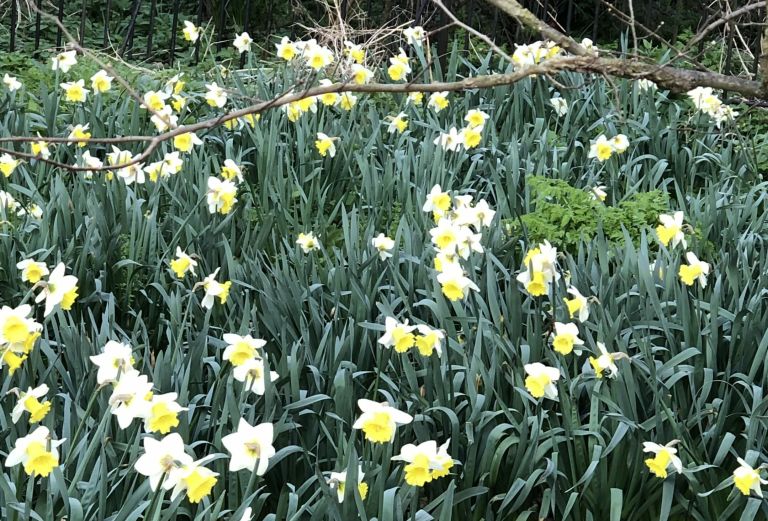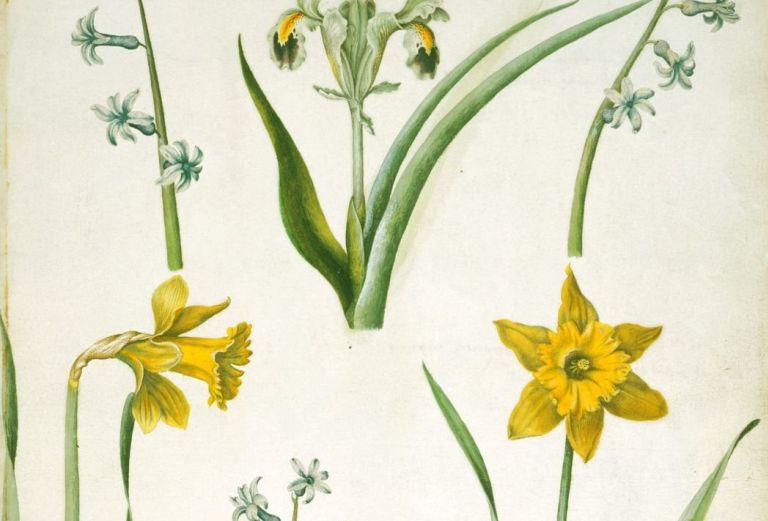
By garden apprentice Patricia Stadler.
Most commonly known as daffodils, Narcissus is a genus of predominantly spring-flowering plants in the amaryllis family (Amaryllidaceae). Easily recognizable by their distinctive extra inner structure known as a corona or trumpet, the early flowering bulbs announce the start of the new growing season by breaking through the darkness of winter. They do so either with their highly scented perfumes, such as the N. papyraceus (often called ‘paperwhite’) which is displayed indoors as it is not hardy, or by their bold colours, such as the native N. pseudonarcissus, which is an easily naturalised species – often seen in lawns. Some cultivars, such as N. ‘Pipit’, exhibit both attributes!
With 40 different species in the genus, the various common names include daffodil, narcissus, and jonquil. In Greek mythology, Narcissus was a hunter known for his extreme beauty. He was handsome to such an extent that he fell in love with his reflection in the water, and was unable to stop staring at himself until death. It is said that a narcissus then grew in that same spot. Although it’s unclear if the mythical character named the flower or vice versa, the term ‘narcissism’ derives from this story.

Fulham Palace sets an amount of the garden budget each year on buying bulbs to be planted around the grounds. Usually, the choices of bulbs and corms are narcissus and crocus as they naturalise easily, meaning that they’ll multiply and increase the display each spring. A popular plant for many centuries, the above watercolour from the seventeenth century includes four species of spring bulbs: Spanish daffodils, hyacinths, Persian iris and purple crocus (1650-82). The artist Alexander Marshal was a talented horticulturist and had strong links with the botanic Bishop Compton.
Don’t miss out on the thousands of narcissus showing off their trumpets throughout the entire garden. If you want to experience the beauty of daffodils in a unique way, why not make yourself a daffodil crown during our annual green meet event?
